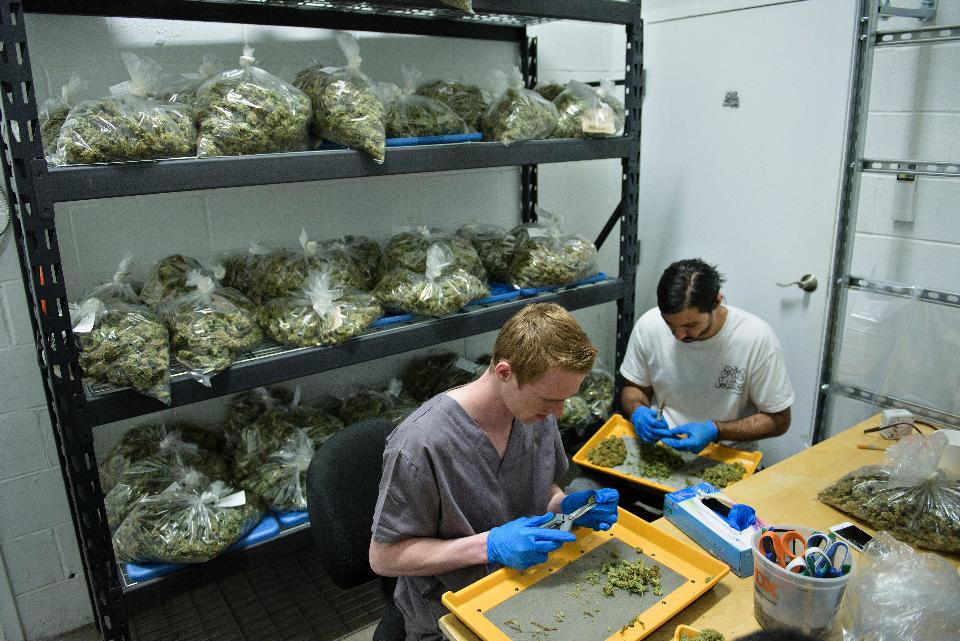Katelyn Baker
Well-Known Member
States that passed medical marijuana laws have seen an 11% reduction in traffic fatalities on average, according to a new study published in the American Journal of Public Health. Compared to states without medical marijuana laws, those with them had 26% fewer traffic fatalities overall. Study data was collected between 1985 and 2014.
The impact was greatest for the 25 to 44 age group, which is also the group with the highest percentage of alcohol-related traffic fatalities. In 2013, about 47% of fatally injured drivers with blood alcohol levels over the legal limit were between 24 and 44, according the National Highway Traffic Safety Administration (NHTSA). The impact was also significant for the 15 to 24 age group.
The most likely takeaway is that medical marijuana laws are helping to decrease alcohol-related traffic fatalities among the age groups at highest risk, at least in some states.
"This finding suggests that the mechanisms by which medical marijuana laws reduce traffic fatalities mostly operate in those younger adults, a group also frequently involved in alcohol-related traffic fatalities," said Julian Santaella-Tenorio, a doctoral student in Epidemiology at the Columbia University Mailman School of Public Health, in a press statement.
But other parts of this study don't neatly line up behind any single conclusion. For instance, the age group 45 and older didn't see a decrease in fatalities, and that happens to be the group "over-represented in the population of patients registered in state medical marijuana programs," according to the study.
In addition, some states with medical marijuana laws actually saw upticks in traffic fatalities. Both California and New Mexico initially saw traffic fatality reductions (16% and 17.5%, respectively) that gradually became increases.
So what this study appears to show is at least a plausible correlation between medical marijuana laws and lower traffic fatalities, but it's not clear why this is true in some states and not others. It's possible that other factors, like stronger police enforcement and more effective public health programs targeting drunk driving, work in tandem with medical marijuana laws in some states.
Silvia Martins, MD, PhD, associate professor at the Mailman School and senior study author, commented, "We found evidence that states with the marijuana laws in place compared with those which did not, reported, on average, lower rates of drivers endorsing driving after having too many drinks. We can also point to other characteristics such as the strength of public health laws related to driving, infrastructure characteristics, or the quality of health care systems, as a partial explanation for these findings."
More on this topic to come as more stats on legalization materialize, including those for states with newly minted recreational legalization.
The study was published in the American Journal of Public Health.

News Moderator: Katelyn Baker 420 MAGAZINE ®
Full Article: States With Medical Marijuana Laws Have Fewer Traffic Fatalities, But Why Isn't Clear
Author: David DiSalvo
Contact: Forbes
Photo Credit: Brendan Smialowski
Website: Forbes
The impact was greatest for the 25 to 44 age group, which is also the group with the highest percentage of alcohol-related traffic fatalities. In 2013, about 47% of fatally injured drivers with blood alcohol levels over the legal limit were between 24 and 44, according the National Highway Traffic Safety Administration (NHTSA). The impact was also significant for the 15 to 24 age group.
The most likely takeaway is that medical marijuana laws are helping to decrease alcohol-related traffic fatalities among the age groups at highest risk, at least in some states.
"This finding suggests that the mechanisms by which medical marijuana laws reduce traffic fatalities mostly operate in those younger adults, a group also frequently involved in alcohol-related traffic fatalities," said Julian Santaella-Tenorio, a doctoral student in Epidemiology at the Columbia University Mailman School of Public Health, in a press statement.
But other parts of this study don't neatly line up behind any single conclusion. For instance, the age group 45 and older didn't see a decrease in fatalities, and that happens to be the group "over-represented in the population of patients registered in state medical marijuana programs," according to the study.
In addition, some states with medical marijuana laws actually saw upticks in traffic fatalities. Both California and New Mexico initially saw traffic fatality reductions (16% and 17.5%, respectively) that gradually became increases.
So what this study appears to show is at least a plausible correlation between medical marijuana laws and lower traffic fatalities, but it's not clear why this is true in some states and not others. It's possible that other factors, like stronger police enforcement and more effective public health programs targeting drunk driving, work in tandem with medical marijuana laws in some states.
Silvia Martins, MD, PhD, associate professor at the Mailman School and senior study author, commented, "We found evidence that states with the marijuana laws in place compared with those which did not, reported, on average, lower rates of drivers endorsing driving after having too many drinks. We can also point to other characteristics such as the strength of public health laws related to driving, infrastructure characteristics, or the quality of health care systems, as a partial explanation for these findings."
More on this topic to come as more stats on legalization materialize, including those for states with newly minted recreational legalization.
The study was published in the American Journal of Public Health.

News Moderator: Katelyn Baker 420 MAGAZINE ®
Full Article: States With Medical Marijuana Laws Have Fewer Traffic Fatalities, But Why Isn't Clear
Author: David DiSalvo
Contact: Forbes
Photo Credit: Brendan Smialowski
Website: Forbes


